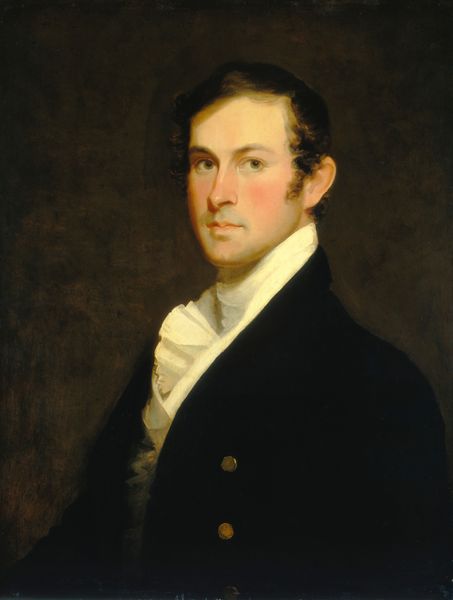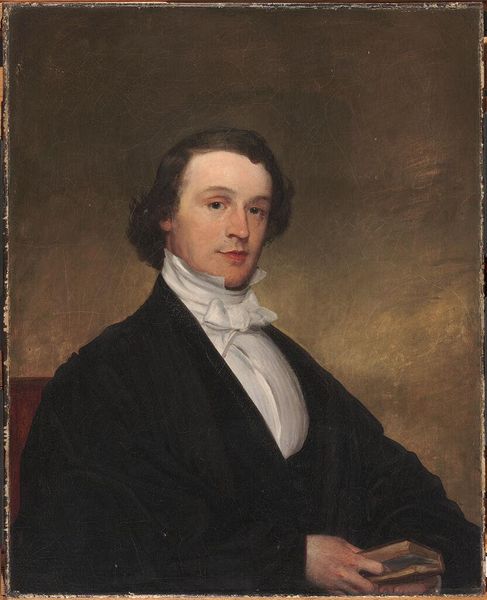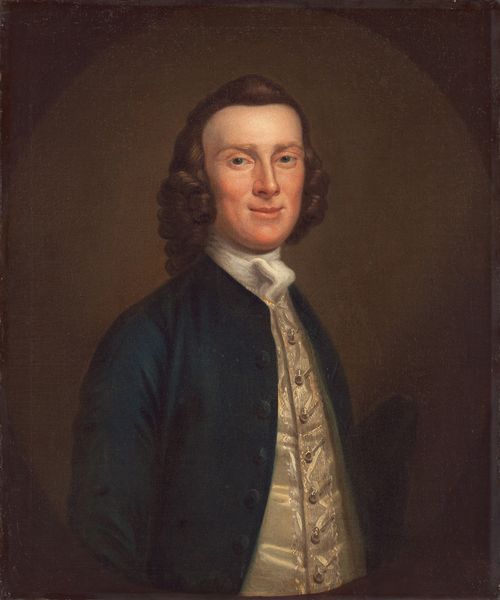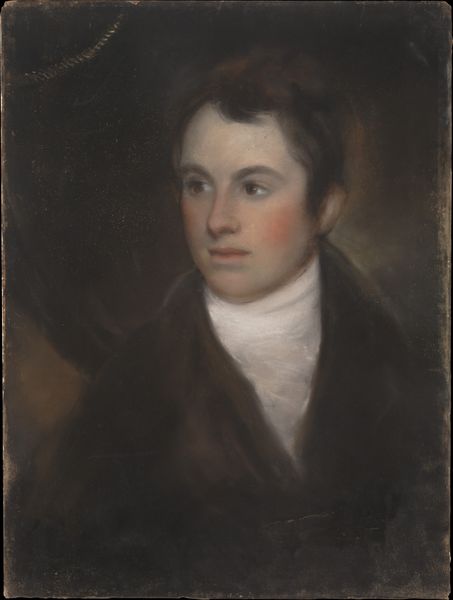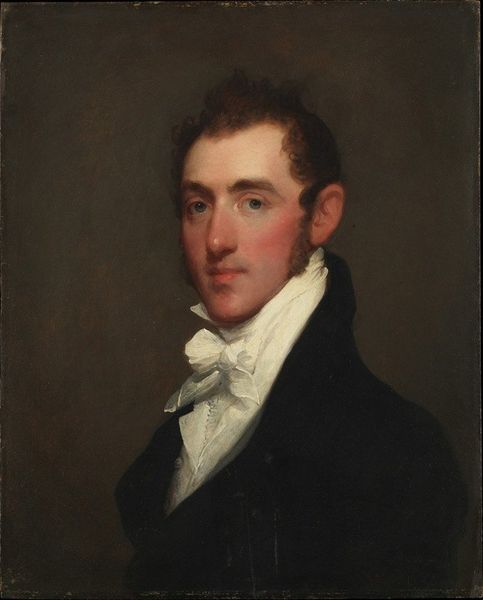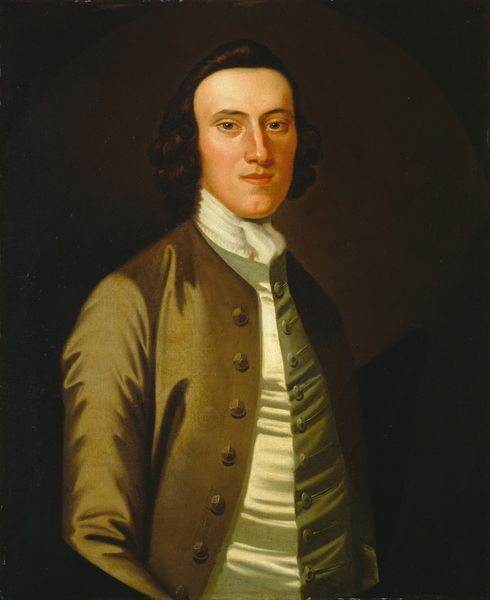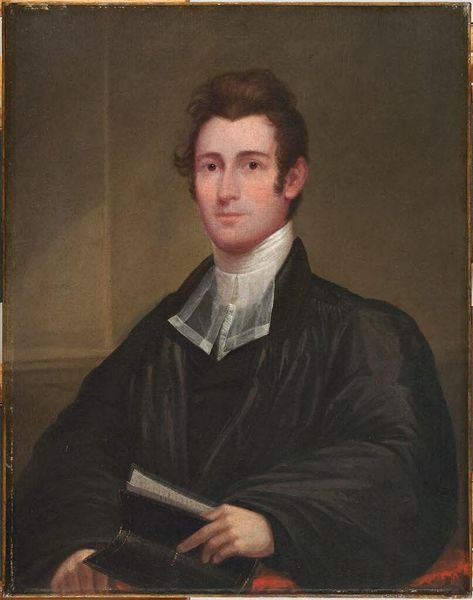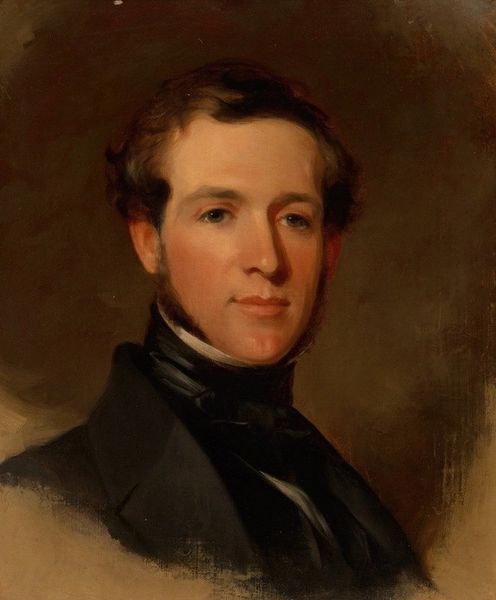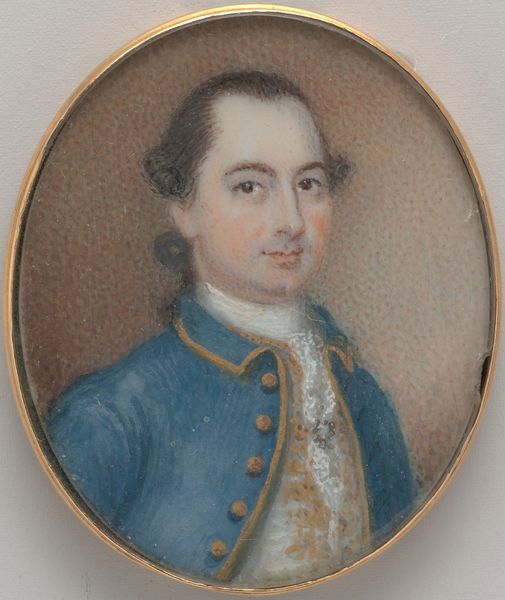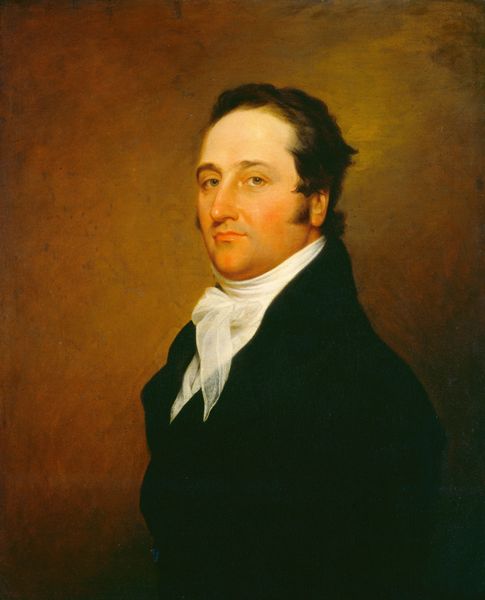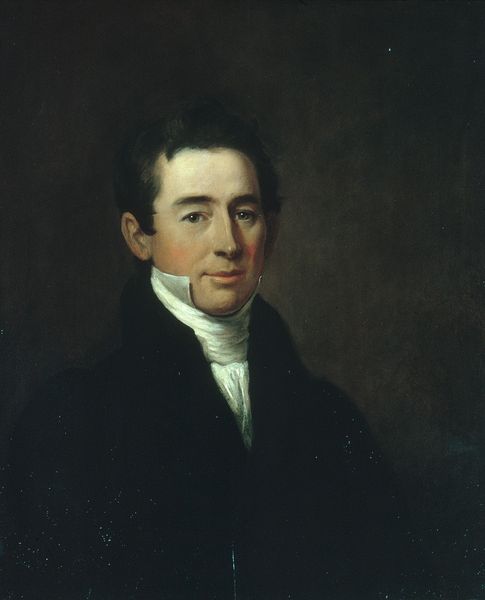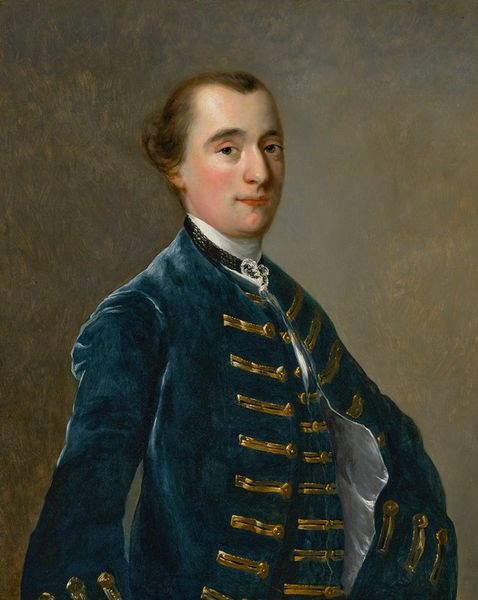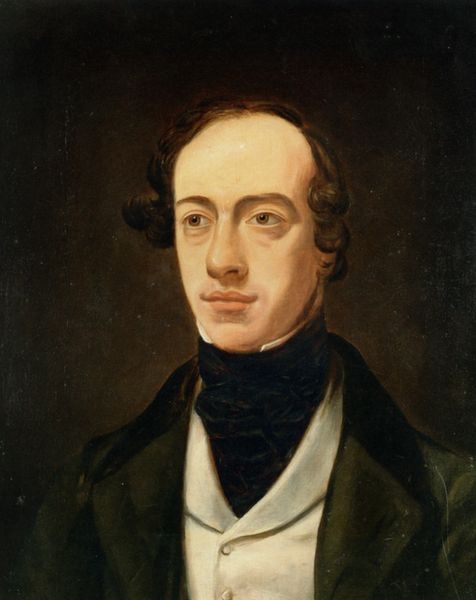
painting, oil-paint
#
portrait
#
figurative
#
neoclacissism
#
painting
#
oil-paint
#
history-painting
#
academic-art
Copyright: Public Domain: Artvee
Curator: This portrait is "Thomas Heyward, Jr.," painted in 1854 by Thomas Sully. It's an oil-on-canvas work that captures the likeness of one of the signers of the Declaration of Independence. Editor: The overall feeling I get is of quiet intensity, perhaps even restrained anxiety. There's something in the tightness of his mouth and the way he angles his gaze. The palette feels muted but that only emphasizes his direct stare. Curator: Given that Heyward was a prominent figure, a wealthy landowner, and involved in revolutionary politics, I'm struck by how the painting doesn’t shy away from depicting a certain guardedness. The historical weight is palpable. You can see it in the somber palette used here, representative of neoclassical aesthetics and a period of emerging national identity, still heavily dependent on enslaved labor. Editor: Exactly. He seems acutely aware of the historical gaze he's under, almost burdened by it. What's interesting is the symbol of the plain white cravat against the dark jacket, that juxtaposition is striking, drawing your attention right to the face. This might also speak to a deliberate visual construction—linking Heyward to ideals of early American civic virtue and, therefore, his contributions to history, to immortality. Curator: His portrayal complicates any straightforward narrative of patriotism. As we analyze Sully’s technique and Heyward's social context, it becomes clear this image exists in a web of privilege, power, and inherent contradictions. Editor: It reminds us that historical figures weren't simple heroes or villains; they were people shaped by their specific environments. This portrait isn’t just about appearance; it's a study of status, responsibility, and legacy viewed through a visual framework—of memory and what that represents for a society like the U.S., particularly in the mid-19th century. Curator: Ultimately, this artwork challenges us to engage critically with history, questioning whose stories are told and how. Editor: I agree completely; it offers a space to reflect upon the complex meanings encoded within a seemingly simple portrait.
Comments
No comments
Be the first to comment and join the conversation on the ultimate creative platform.
